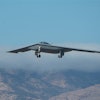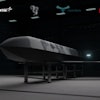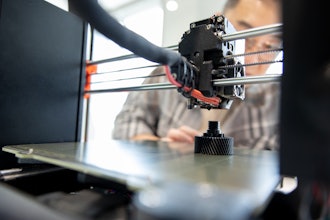The fire that broke out in a UPS plane that crashed last week in Dubai, killing both pilots, appears to have begun in a cargo compartment, according to people familiar with the accident investigation.
Accident investigators are now trying to verify which cargo aboard the Boeing 747-400 was located just forward of the starboard wing, where the fire erupted, those familiar with the investigation said. Investigators also want to know if there were any lithium-ion batteries in that location. If a battery short-circuits, it can catch fire and ignite others.
The location of the fire was identified so quickly because the plane was equipped with a sophisticated data transmission system that sent information via satellite to the company's airline operations headquarters in Louisville, Kentucky. The transmissions are so fast, people familiar with the investigation said, that UPS' airline operations half a world away had information in hand indicating the plane was in serious trouble before it crashed.
Those familiar with the investigation who discussed the preliminary findings asked not to be identified because they weren't authorized to speak publicly.
Atlanta-based UPS, formally known as United Parcel Service Inc., has identified the crew members killed in the crash as Capt. Doug Lampe of Louisville, Kentucky, 48, and First Officer Matthew Bell, 38, of Florida. Lampe had been with UPS since 1995. Bell had been with the company since 2006. Both flew out of UPS's Anchorage, Alaska, pilot base.
UPS spokesman Mike Mangeot confirmed that the crashed plane was equipped with an airline health maintenance system, Boeing's name for the transmission system. He declined to comment directly on the crash or what information the company received from the plane before the accident.
AHM systems help "self-diagnose" problems in flight and alert the airline before landing so that maintenance workers are ready to do repairs and parts are on hand. The systems aren't standard on Boeing planes, but the company has been installing them on 747-400s for customers who request them for about five years, said Boeing spokesman Jim Proulx.
Among the data transmitted ahead of the Dubai crash, according to people familiar with the investigation, was an alert about a serious problem in the cargo compartment near the starboard wing.
The plane's pilots also told air traffic controllers that a fire had broken out in the main compartment, and smoke was so thick that they were having trouble reading their instruments, people familiar with the investigation said.
Among the issues raised by the crash is whether FAA should require equipment be installed in cockpits that would enable pilots to read instruments — in most modern airliners that amounts to computer screens — even in heavy smoke. Pilot unions have been pressing for the equipment.
Pilots have limited options for extinguishing a fire in a cargo compartment, said aviation safety consultant Jack Casey. A continuously smoky fire is especially difficult, Casey said, because it interferes with pilots' ability to breathe and see well enough to fly the plane.
The investigation is being led by UAE's aviation authority, but a team led by the National Transportation Safety Board has flown to Dubai to assist the investigation.
A preliminary report released by UAE authorities on Sunday said the crew reported smoke in the cockpit about 20 minutes after taking off from Dubai on a flight to a UPS hub in Cologne, Germany. Air controllers in the nearby Gulf nation of Bahrain said the plane was returning to Dubai. But the crew on Flight 6 did not speak directly with the Dubai tower. For reasons still unclear, the crew could not switch from the Bahrain to the Dubai radio frequency.
The plane was not in the proper alignment to make an emergency landing in Dubai on its first pass, but then began losing altitude and crashed inside a UAE military camp, authorities said.
Investigators also want to exam the plane's flight data recorder — which also monitors the plane's systems — to see if it verifies the information received through the AHM system. The data recorder and the cockpit voice recorder will be sent to the United States for analysis, UAE authorities said.
___
Online:
National Transportation Safety Board www.ntsb.gov


















